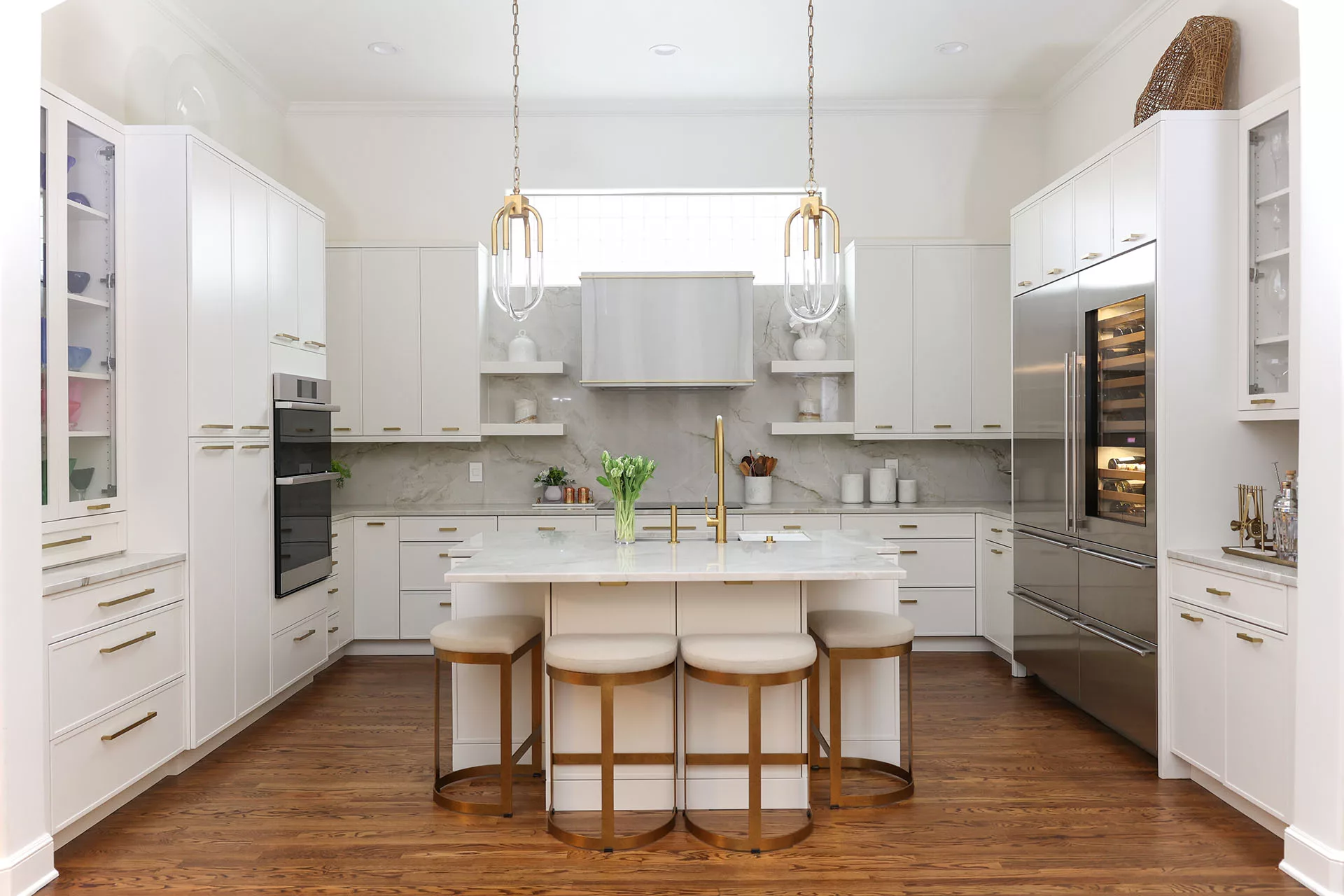
Designing a functional kitchen layout is crucial for anyone who loves to cook, entertain, or simply spend time in their kitchen. The kitchen is more than just a place for meal prep; it’s the heart of the home, a space that needs to be both practical and inviting. Whether you’re planning a complete kitchen remodel or just looking to improve the TM Italia efficiency of your current setup, understanding the elements of a good layout will make a world of difference. From the importance of the kitchen work triangle to optimizing storage and flow, this guide will walk you through the essential aspects of creating a kitchen that works for you.
- The kitchen Work Triangle Principle
One of the most fundamental concepts in kitchen design is the kitchen work triangle, which involves positioning the stove, sink, and refrigerator in a way that makes movement between these key areas as efficient as possible. The idea is to create a triangular workflow that minimizes walking distance and makes meal prep a breeze. Each side of the triangle should be between 4 and 9 feet, ensuring you have enough room to work comfortably without wasting steps. This layout works well in many kitchen shapes, including U-shaped, L-shaped, and galley kitchens. While the work triangle is an excellent starting point, it’s important to consider your personal cooking habits and adjust accordingly to suit your needs. - Choosing the right Kitchen Layout
The shape of your kitchen often determines which layout will work best. Common kitchen layouts include U-shaped, L-shaped, galley, and island layouts, each with its own set of advantages. U-shaped kitchens are great for maximizing storage and counter space, making them ideal for larger kitchens or homes where cooking is a daily affair. L-shaped layouts work well in open-plan homes, allowing for easy interaction with family and guests while you cook. Galley kitchens, with parallel counters, are efficient for small spaces but can feel cramped without proper planning. If you have the space, adding an island can provide extra prep space and a spot for casual dining. Selecting the right layout depends on your space, how many people use the kitchen at once, and your cooking and entertaining style. - Maximize Storage and Organization
No matter the size of your kitchen, storage is always a priority. A functional kitchen layout incorporates smart storage solutions that make use of every inch of space. Use vertical storage options like tall cabinets or open shelving to keep frequently used items within easy reach. Install pull-out drawers or organizers in lower cabinets to prevent having to dig around for pots and pans. Consider adding a pantry, even if it’s just a small cabinet with pull-out shelves, to store dry goods and keep the clutter off your counters. When planning your layout, think about where items will be stored based on how you use them. For example, keep pots and pans near the stove and utensils in a drawer by the prep area. A well-organized kitchen not only looks better but also makes cooking more enjoyable and efficient. - Prioritize Counter Space
Counter space is a premium in any kitchen, and having enough of it is essential for a functional layout. When designing your kitchen, make sure to allocate plenty of workspace for food preparation, cooking, and cleanup. If possible, add an island or a peninsula to increase counter space, especially if you entertain often or cook elaborate meals. Be mindful of where your appliances are placed—try to keep the microwave, coffee maker, and other frequently used items from taking up too much room. Consider integrating your appliances into the cabinetry for a streamlined look. Additionally, use creative solutions like a cutting board that fits over your sink or a pull-out counter extension for more prep space when needed. Ample counter space keeps your kitchen efficient and makes multitasking a breeze. - Optimize Traffic Flow
A well-planned kitchen layout also accounts for smooth traffic flow, ensuring the space doesn’t become congested, especially in busy households. If your kitchen has more than one entrance, make sure the pathways are clear and wide enough for multiple people to move around without bumping into each other. In kitchens with an island, leave at least 36 to 48 inches of space between the island and the surrounding cabinets or appliances. This not only provides easy access but also makes it safer to work, especially when you’re handling hot pans or sharp knives. If your family or guests often gather in the kitchen, consider setting up a designated area, such as a breakfast nook or bar seating, that keeps people out of the main cooking zone. Thoughtful traffic flow planning makes your kitchen a more comfortable and welcoming place for everyone.
Creating a functional kitchen layout involves more than just picking out beautiful cabinets and countertops. It requires thoughtful planning and consideration of how you use the space daily, ensuring that every element, from storage to traffic flow, enhances your cooking experience. By focusing on the kitchen work triangle, selecting the right layout for your space, maximizing storage, prioritizing counter space, and optimizing traffic flow, you can design a kitchen that is both efficient and a joy to spend time in. With these principles in mind, your dream kitchen is within reach, ready to transform the way you cook and live.
